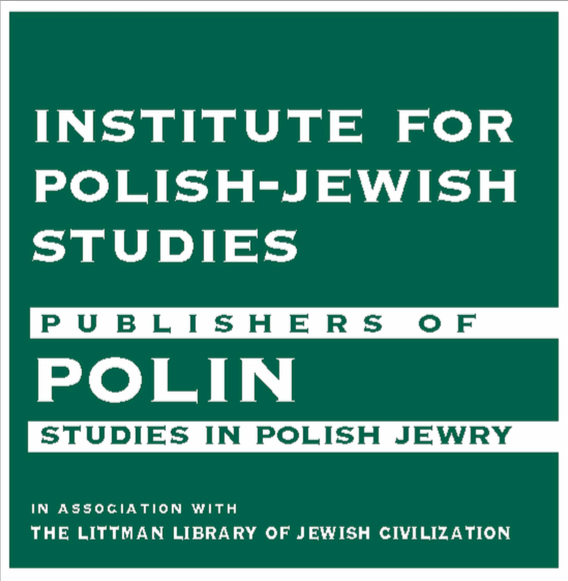Institute for Polish-Jewish Studies
International Workshop: Identifying, Narrating, Regulating, Covering, Healing the Jewish Body: Eastern Ashkenas in the Early Modern Period.
On April 25, 2016, the Institute for Polish-Jewish Studies held a one-day academic workshop about Jewish discourses and practices concerning the body. Questions of dress and exterior appearance, medical theory and practice, and reflections about supernatural interference with the human body were among the topics of six presentations.
The first speaker, Anna Novikov (Centre for Central and Eastern Europe, Cologne-Bonn) spoke about aspects of dress among Ashkenasic Jews, her project being a comprehensive review of the terminology concerning all varieties of dress and other items covering the body, such as hats and wigs. This review includes terms in Jewish as well as non-Jewish languages, allowing to detect phenomena of intercultural borrowing – among the aspects Novikov raised was the origin of the traditional Jewish garb in Eastern Europe, suggesting that in contrast to the usual assumption of Jews replicating Polish-aristocratic dress, inspiration may also have been drawn from Ottoman examples. Cornelia Aust (Leibniz Institute for European History, Mainz) focused on attempts of Jewish communities to regulate sartorial practices among Jewish women in Western and Eastern Ashkenas, such as sumptuary regulations in community by-laws. Analysing the often-cited Kraków by-laws of 1595, Aust argued that while community leaders would appear to worry as much about male dress as they were about the appearance of women, women’s dress was much more heavily regulated than male. Her reading of Tsevi-Hirsh Kajdanovers iconic text Kav ha-yashar (1705) offered more evidence that dress was an important marker of social status and an important tool in establishing and maintaining communal hierarchies. In the second section, Iris Idelson-Shein (University Frankfurt am Main) looked at early modern medical treatises of Jews and non-Jews focusing on the womb as the quintessentially female body organ. Idelson-Shein argued that medical literature of the early modern period reflects a sense of added urgency in understanding the function of the womb among more general concerns about feminine agency and particularly feminine speech. A case in point was the comprehensive borrowing from the seminal medical treatise by Lazarus Riverius (The Practice of Physick, London 1678) by Yaacov Zahalon (Otsar ha-Hayim, Venice 1683), of major relevance in the Ashkenasic medical discourse of the period. Magdaléna Jánošíková (Queen Mary University London) offered a reflection on the role print and manuscripts in the dissemination of medical knowledge. In contrast to the general assumption that print was a factor in accelerating discoursive innovation, the speaker suggested that print also played a major role in stabilising traditional views, not in the least through the entanglement of medical and religious argument. The third section examined the concept of popular and scientific through an example of the incense liturgy in Abraham Yagel’s plague tractate (Moshia Hosim, Venice, 1587) to explore the less apparent links. François Guesnet (University College London) discussed the relationship between Jewish and non-Jewish pre-medical discourses about the matting of hair, and the assumption of supernatural interference. In Jewish halakhic argument, such interference had a significant impact on the assessment of hetsitsa, or interposition, in the context of ritual purification. Guesnet argued that in both the western and eastern Ashkenasic tradition, demons of non-Jewish mythological contexts played a crucial role this discussion, shifting from Germanic to Slavonic origin in the process of eastward migration of Ashkenasic Jews. Marek Tuszewicki (Jagiellonian University) also looked at the entangled interpretation of matted hair (Polish: koltun, Yiddish: koltunes) in popular medical practices and interpretations, and demonstrated their proximity. In the second part of his presentation, the speaker demonstrated the relevance of early modern medical theories, practices, and beliefs in the research of nineteenth- and early twentieth-century Poland. The speaker thus defined the framework of his research as a long history of Jewish popular medicine, as opposed to say strict periodization based on the distinction between modern and pre-modern times.
All presentations reflected to a significant degree assumptions of what Michel Foucault has called le souci de soi, the concern for oneself. In case of Ashkenasic discourses about the body, it would be probably appropriate to also speak of the worries of a community over the bodies of its members. These worries were not primarily altruistic for the suffering body – it was the worry for keeping control, establishing rules, establish boundaries, delineate between the human and the supernatural, between the communal and the individual, between oneself and the other, and last but certainly not least, between man and woman. A unifying perspective was the rejection of an essentialist approach – the speakers did not assume that there is such a thing as a Jewish body. Their presentations however demonstrated that practices and discourses are bound in time, place and context, and that there were indeed specific Jewish ways to ‘identify, narrate, regulate, cover and heal’ the human body.
The workshop, attended by around forty people, was hosted by the UCL Institute of Advanced Studies and held at its premises, for which the Institute for Polish-Jewish Studies wishes to thank its director, Prof Tamar Garb. The organisers hope to publish the proceedings.
Session I
Chair: Iris Idelson-Shein
Anna Novikov (Centre for Central and Eastern Europe, Cologne-Bonn):
‘I Wrapped You with Fine Linen and Covered You with Silk.’
Dress as Critical Category in Eastern European Jewish History
Cornelia Aust (Leibniz Institute for European History, Mainz):
Covering the Female Jewish Body.
Dress and Dress Regulations in Early Modern Ashkenas
Session II
Chair: François Guesnet
Iris Idelson-Shein (Goethe Universität, Frankfurt):
The Womb and its Woes in Early Modern Jewish Medical Texts
Magdalena Janosikova (QMUL):
Identifying the Body of Medical Texts: Recording Medical Knowledge in Early Modern Ashkenas
Session III
Chaired: Mechthild Fend
François Guesnet (UCL): Entangled Hair, Entangled Mythologies:
References to Matted Hair in Western and Eastern Ashkenas
Marek Tuszewicki (Jagiellonian University, Kraków): Human Body in Ashkenasic Folk Medicine of the 19th and 20th centuries
François Guesnet, Magdaléna Jánošíková
